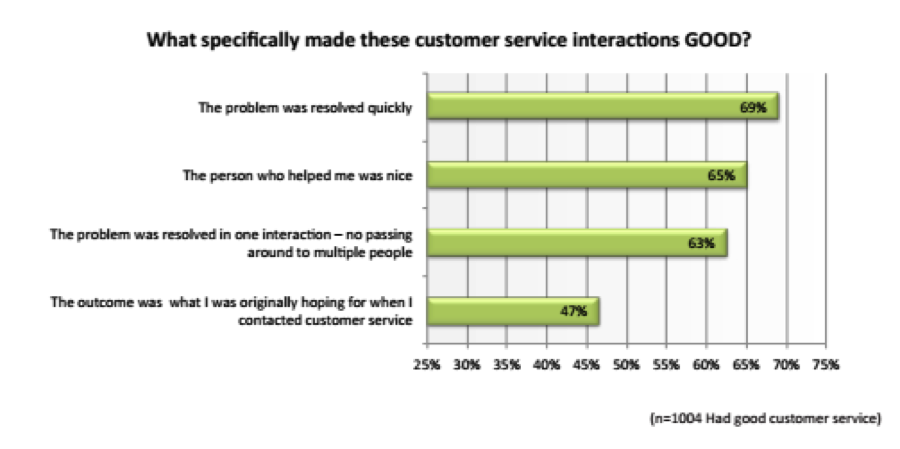We have all heard some variation of the saying, “It’s not about the destination, it’s about the journey,”—a concept that has recently begun to ring true for contact centers and customer service departments. In fact, according to a recent survey conducted by ZenDesk and Dimensional Research, it was revealed that customers are increasingly judging their service experiences not based on the official outcome of the interaction, but on the timeliness of the interaction, something that may come as a surprise to those who have long considered “first call resolutions” as the key to their success.
Consider the following findings from the study:

While getting their problem resolved “in one interaction” was not surprisingly a factor towards positive customer experiences, consumers considered ‘getting their problem resolved “quickly”’, and ‘dealing with a “nice” customer service representative’ more important. And only 47% of respondents credit ‘reaching their desired outcome’ as the key to a good service experience. So while yes, “first call resolution” still continues to play a crucial role in creating positive customer interactions, it should certainly not be the primary metric used to analyze a contact center’s success, as there are many other factors at play.
How should contact centers and customer service organizations proceed?
Knowing the insights revealed through this study, contact center managers and customer service professionals should focus on ways they can improve the quality of every interaction, not just ways they can resolve customer issues in one fell swoop—and this starts with implementing the right processes, and empowering customer service representatives with the right tools and technology. While first call resolutions might certainly be the byproduct of doing so, there are many issues that will always require more than one interaction, regardless of the technology, people, or processes in place. And by focusing on the quality of the interaction itself, businesses will find that customers will not base their experience on the immediate resolution of their problem, but on the promptness, effort, and willingness of the representative who was helping them.
A few suggestions:

Align Business Workflows with Customer Needs: Many surveyed consumers found it frustrating when they were forced to explain their issue multiple times to multiple customer service representatives. But by adopting an advanced contact center software offering interactive voice response, automatic call distribution, and skills-based routing tools, businesses can link their communications platform to predetermined business workflows, automatically routing customers to the individual or department best suited to meet their needs—and mitigating the risk of customers being transferred from one individual to another.
Give representatives the information they need: Often times, an agent’s inability to quickly resolve customer needs is due to their lack of immediate access to client data. An agents spend, on average, 11% of their time looking for information needed to manage customer interactions. But by integrating disparate SaaS solutions (each of which may house data siloes across different departments) with your communications platform, agents will have immediate access to all relevant customer information, at the time it matters most—the point of the interaction—making for a more seamless conversation and faster problem resolution.
Enhance Agent Experience: Clients also want to work with “nice” service representatives—but this is largely contingent on businesses making sure their employees are happy and productive. In addition to the above suggestions, which will help empower agents to quickly resolve customer need, businesses should adopt WFM and WFO platforms to help create a more productive workforce, provide agents easy-to-use tools, and offer continuous feedback to help keep them motivated. Their overall attitude will reflect in day-to-day customer interactions.





